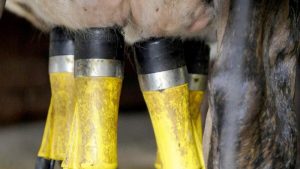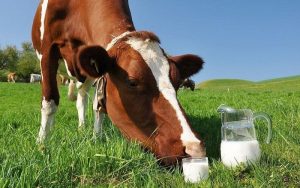
Acute bovine liver disease (ABLD) has periodically affected dairy cows in South Australia, Victoria, NSW and Tasmania — with up to 83 per cent of a herd affected in June on one dairy farm in south-west Victoria and more than 50 per cent of two herds affected in Gippsland, one herd in October, the other one in April.
Half of the animals died in the outbreak in south-west Victoria and the remainder showed significant production loss, along with health issues such as ongoing photosensitivity. Half the herd died on one of the affected Gippsland farms.
A dairy farm in central Gippsland was quarantined for an anthrax outbreak initially, but a postmortem diagnosis on one of the affected cows, by a local veterinarian, identified ABLD (see second story).
Unfortunately, ABLD also has similar symptoms to other liver diseases, such as acute liver fluke and acute venocaval syndrome, and facial eczema.
Provisional misdiagnoses have included rye-grass staggers, plant or lead toxicity, hypomagneseamia, clostridial disease, pestivirus, anthrax, Johne’s disease, nitrate poisoning and blue-green algae toxicity, all of which have had to be excluded when cattle die suddenly.
This has led to a strong belief among authorities that farmers are not reporting small numbers of deaths, which means the extent of the problem is difficult to identify.
“Cases require samples taken from necropsy to diagnose. It’s expected that less severe cases may be occurring without being diagnosed,” Agriculture Victoria Maffra district veterinary officer Michael Roberts said.
Information from Gribbles Veterinary Pathology and Agriculture Victoria indicates biochemistry revealed elevated liver enzymes and lesions observed within the liver of affected cattle (acute periportal necrosis and haemorrhage) were considered most compatible with a diagnosis of ABLD, or another hepatotoxic agent (plant or mycotoxin).
ABLD is a reportable disease because state authorities are trying to collate as much information as possible, to build knowledge about it.
It is also a syndrome, according to some veterinarians.
“ABLD is a syndrome associated with significant liver damage in cattle of all ages and classes, in Victoria, Tasmania and parts of South Australia,” Dr Roberts said.
There has been some progress on understanding what causes ABLD, with a toxin identified, but research is ongoing to identify if weather or other conditions, including pasture species, can identify if there is a short window of toxicity in pastures.
Weather conditions vary when ABLD occurs — it has affected cattle following a distinct weather pattern: a dry period, then sudden rain in a short period of ≥15 mm, then a dry warm period; however, it has also occurred when low rainfall has been followed by bitterly cold and frosty weather.
ABLD does appear to coincide with the introduction of cattle onto less fertile areas of the farm or into new paddocks with dry feed — including a grass known as rough dog’s tail (Cynosurus echinatus) when it contains a highly toxic fungus on the standing heads.
For some farmers, feeding grain and fodder during a period of dry climate conditions also appears to be an implicating factor.
According to information provided by Biosecurity Tasmania and Agriculture Victoria, in cattle that don’t die suddenly, the most acute sign is photosensitisation, which occurs when plant breakdown products react with sunlight in the skin.
Affected cattle may be distressed, agitated, seek shade and develop sunburn on the muzzle and areas of pale skin, udder and vulva.
Other ongoing signs include fever, reduced milk production and depression.
Some breeds of dairy cattle are at high risk to sunburn when they have large expanses of white hair in their coats.
If ABLD results in the death of cattle on-farm, the animals can be buried or disposed of according to state or territory requirements; affected, but still living, cattle can be sent to a knackery.
In the case of the central Gippsland dairy farm, the farmers recorded a meticulous amount of weather and paddock rotation data (see second story).
The forensic examination revealed the affected animals were all from the same paddock.
A portion of the herd went back into that paddock and were not affected.
However, on a third rotation, some of the same cows grazed that paddock within the same weather patterns and a second effect of ABLD was observed.
Unfortunately, by the time the implication of a toxin byproduct was made, it was no longer evident — if it had existed — on the pasture.
The standout defining sample from diagnosis among the cattle on this farm was the liver lesions.
The main clinical presentation was a number of the herd dying suddenly, with some bleeding.
In Tasmania, ABLD has been recorded in herds in the northern midlands and south, particularly the Derwent Valley and Copping areas.
In southern Victoria, ABLD has been diagnosed in herds in the south-western Warrnambool and Camperdown district, in the central and east Gippsland regions in the south-east and on some farms along the border region of Victoria and South Australia.
Herds in south-west Victoria and south-east SA were affected in autumn, whereas cattle in Gippsland have been affected in winter, spring and summer.

























